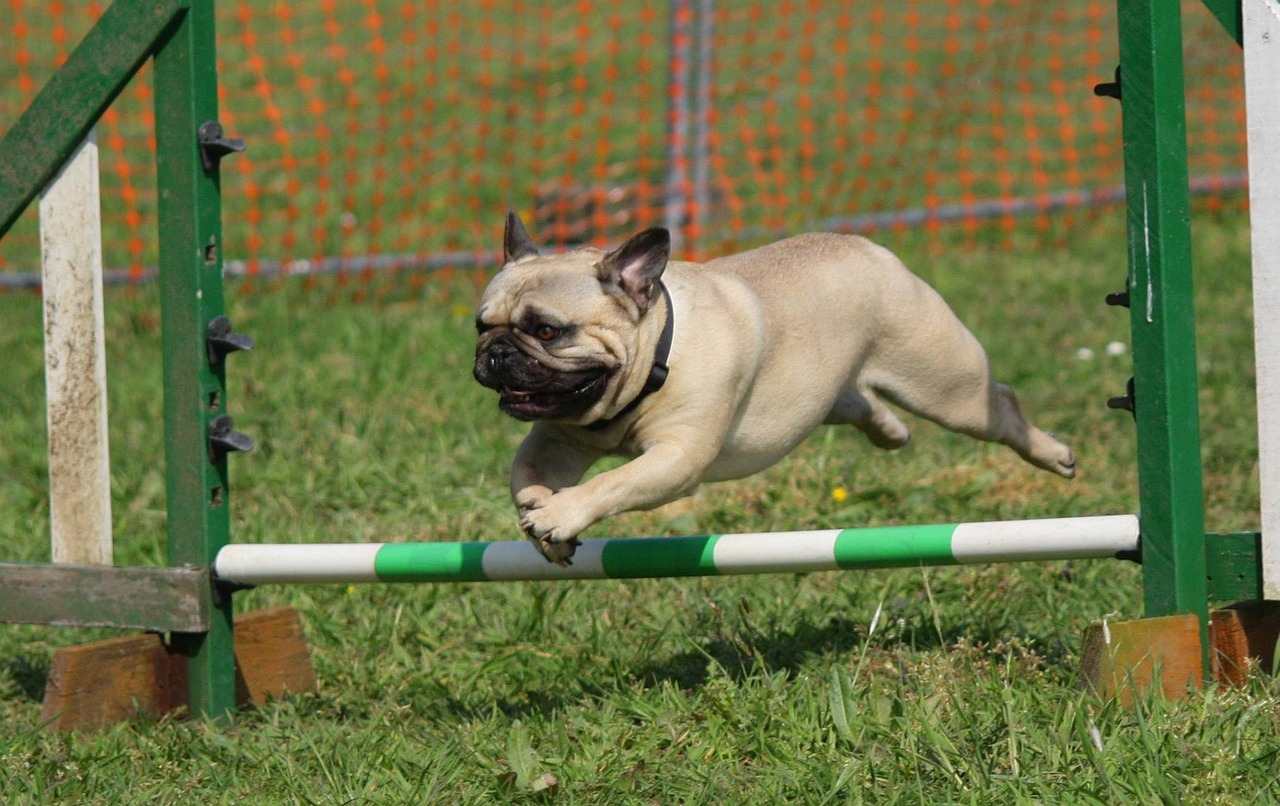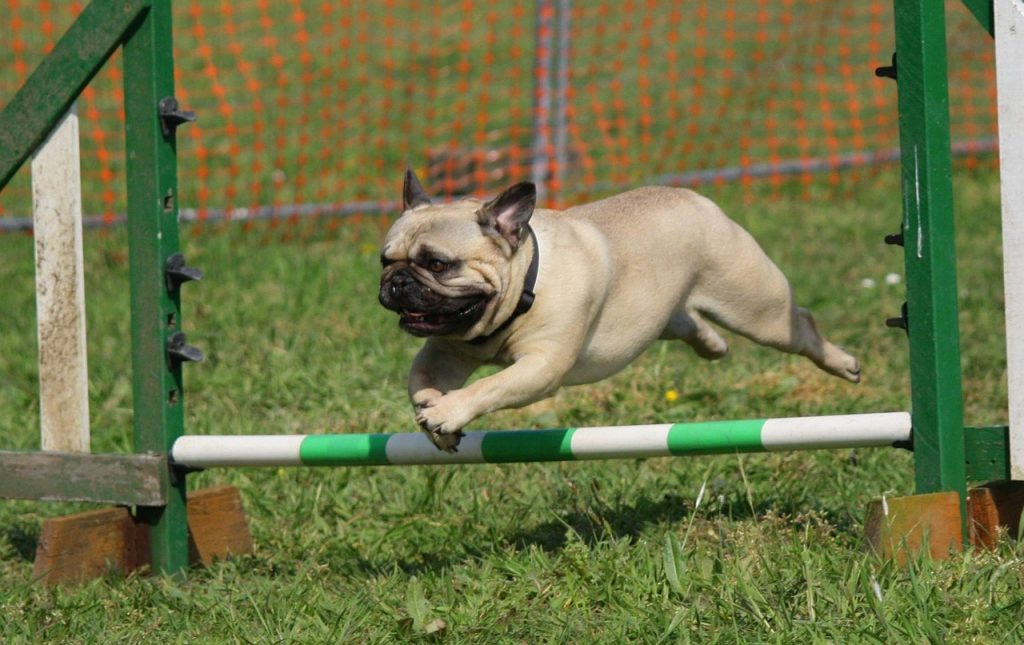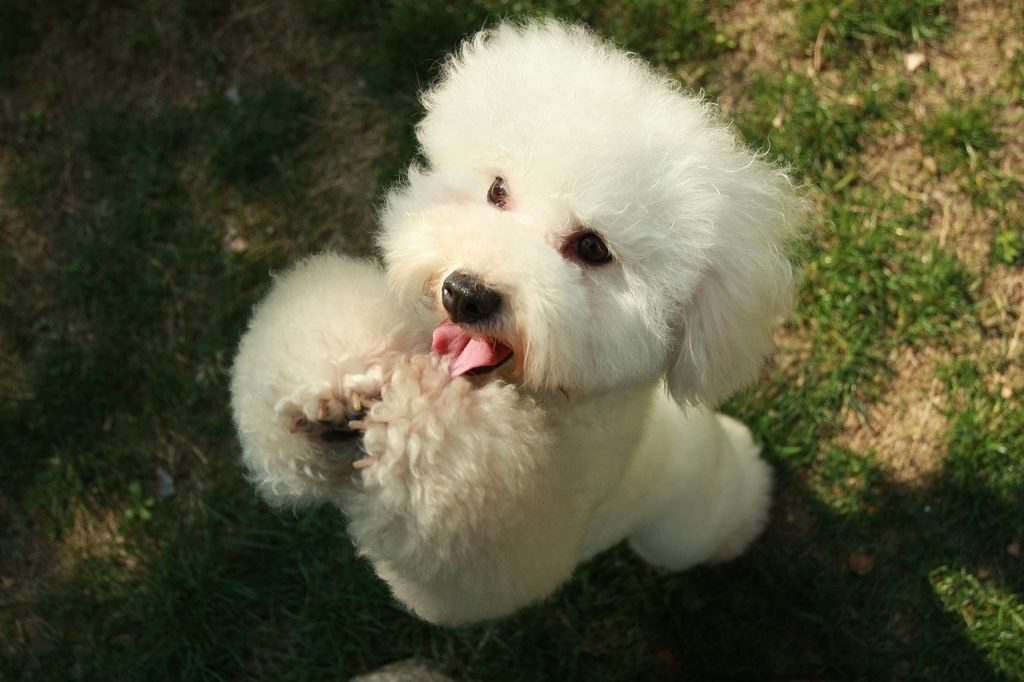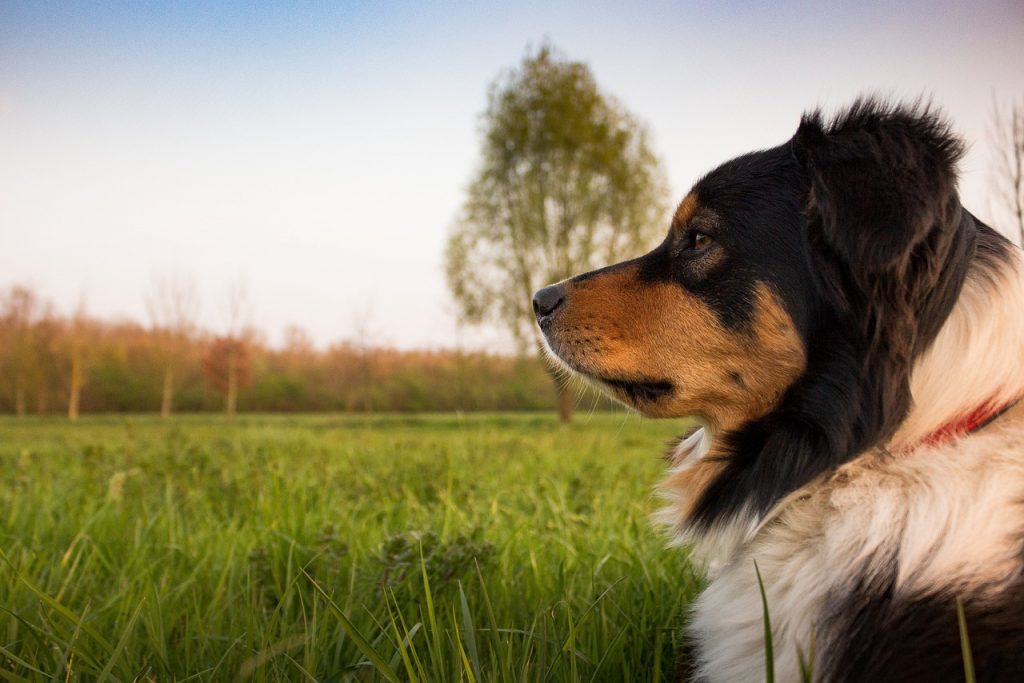The Unbreakable Bond: Building A Strong Relationship With Your Canine

In “The Unbreakable Bond: Building a Strong Relationship with Your Canine,” discover the secrets to fostering a deep and lasting connection with your four-legged friend. Exploring the importance of trust, communication, and companionship, this article will guide you on a journey towards building an unbreakable bond with your canine companion. Gain insights into effective training techniques, the significance of quality time, and the benefits of positive reinforcement. Whether you’re a seasoned dog owner or embarking on your very first pet-parenthood adventure, this article is designed to empower you in cultivating a strong and fulfilling relationship with your furry companion.

Understanding Canine Behavior
Body Language
Understanding canine body language is key to effectively communicating with your furry friend. Dogs have their own unique ways of expressing their emotions, and being able to interpret their signals can help you respond appropriately. For instance, a relaxed, wagging tail indicates happiness, while a tucked tail signals fear or anxiety. Pay attention to their ears, eyes, and overall posture to get a better understanding of what they’re trying to convey.
Social Structure
Dogs are pack animals, and they have a natural need for social interaction and a defined social structure. As their human companion, it’s important for you to establish yourself as the pack leader. This means setting boundaries and providing consistent guidance. By establishing yourself as a trustworthy leader, you can help your canine friend feel secure and confident in their place within the family dynamic.
Canine Communication
Communication plays a vital role in understanding your canine companion. Dogs communicate through a combination of vocalizations, facial expressions, and body postures. Barks, growls, and whines are just a few of the sounds you might hear from your canine friend. By observing their body language and listening to their vocalizations, you can gain valuable insights into their thoughts and feelings. Learning and responding to their communication signals can help strengthen the bond between you and your furry friend.
Creating a Positive Environment
Establishing a Routine
Dogs thrive on routine and stability. Establishing a consistent daily routine provides them with a sense of security and predictability. Set regular times for feeding, exercise, and play, and stick to them as much as possible. This will help reduce stress and anxiety in your furry friend, making them feel safe and cared for.
Providing Mental Stimulation
Just like humans, dogs need mental stimulation to stay engaged and happy. Boredom can lead to destructive behaviors and behavioral issues. Provide your dog with puzzle toys, interactive games, and training exercises to keep their minds active. This not only helps prevent boredom but also strengthens their cognitive skills and boosts their overall well-being.
Ensuring Physical Exercise
Regular physical exercise is essential for a dog’s overall health and well-being. Engage in activities that cater to your dog’s breed, age, and energy level. Whether it’s a leisurely stroll in the park, a game of fetch, or a run around the backyard, physical exercise not only helps keep your furry friend physically fit but also releases excess energy, reducing the likelihood of destructive behaviors.
Training and Socialization
Basic Training Commands
Training your dog is not only a way to ensure their safety but also a means of building a strong bond with them. Teach them basic commands such as “sit,” “stay,” and “come” using positive reinforcement techniques. Training sessions should be short, frequent, and consistently reinforced. Celebrate their successes with treats, praise, and affection, motivating them to learn and obey.
Positive Reinforcement vs Punishment
Positive reinforcement is a highly effective training method that rewards desired behaviors rather than punishing unwanted ones. Using treats, praise, or playtime as rewards will help your dog associate performing the desired behavior with positive outcomes. Punishment, on the other hand, can cause fear and anxiety, damaging the trust between you and your canine friend. Focus on positive reinforcement to encourage good behavior and strengthen your bond.
Socializing with Humans and Other Dogs
Socialization is a crucial aspect of your dog’s development. Exposing them to different people, animals, and environments at an early age helps them become well-adjusted and confident adults. Organize playdates, take them to obedience classes, and provide opportunities for positive interactions with other dogs. This will not only help prevent behavioral issues but also ensure that your furry friend feels comfortable and relaxed in various social settings.
Nutrition and Health
Choosing the Right Diet
Proper nutrition is vital for your dog’s overall health and well-being. Consult with your veterinarian to determine the appropriate diet for your furry friend, taking into consideration their age, breed, size, and any specific dietary requirements. Opt for high-quality dog food that provides the necessary nutrients, vitamins, and minerals. Remember to monitor their weight and adjust their portion sizes accordingly to prevent obesity and maintain a healthy weight.
Regular Veterinary Check-ups
Regular veterinary check-ups play a crucial role in your dog’s overall health. Schedule routine visits with your veterinarian to ensure that your furry friend is up to date on vaccinations, parasite prevention, and overall wellness examinations. These visits allow your veterinarian to detect any potential health issues early on, providing prompt treatment and maintaining your dog’s health and happiness.
Preventive Care and Vaccinations
Preventive care, such as vaccinations and parasite prevention, is essential for keeping your dog healthy and protected. Vaccinations protect against contagious and potentially life-threatening diseases, while preventative measures against fleas, ticks, and heartworms safeguard them from common parasites. Stay up to date with their vaccination schedule and consult with your veterinarian to determine the appropriate preventative treatments for your furry friend.

Grooming and Hygiene
Brushing and Bathing
Regular grooming helps maintain your dog’s cleanliness and overall health. Brushing their coat removes loose hair, prevents matting, and stimulates their skin. The frequency of brushing depends on the breed and coat type of your dog, so consult with your veterinarian or a professional groomer for specific recommendations. Bathing your dog is also essential to keep their coat and skin in good condition. Use dog-specific shampoos and conditioners and ensure thorough rinsing to avoid any skin irritations.
Nail Trimming
Keeping your dog’s nails trimmed is crucial for their comfort and mobility. Overgrown nails can be painful and make walking difficult for your furry friend. Regular nail trimming every few weeks is recommended for most dogs. Be cautious not to cut too close to the quick, which is the sensitive area within the nail. If you’re uncomfortable with nail trimming, consult with a professional groomer or your veterinarian for assistance.
Oral Care
Proper oral care is often overlooked but is crucial for your dog’s overall health. Regular toothbrushing using dog-specific toothpaste helps remove plaque and tartar buildup, preventing dental diseases. Provide your furry friend with appropriate chew toys to help keep their teeth clean and healthy. In addition, annual dental cleanings performed by your veterinarian can help ensure your dog’s oral health.
Building Trust and Bonding
Creating a Safe Space
Creating a safe and comfortable space for your dog is essential for building trust and a strong bond. Provide them with a designated area, such as a crate or a specific room, where they can retreat and feel secure. Ensure that this space is their own and is free from any potential stressors or disruptions. By providing a safe haven, you’re showing your dog that their well-being is a top priority.
Positive Reinforcement
Building a strong bond with your dog is all about positive reinforcement. Rewarding good behaviors with treats, praise, and affection reinforces their understanding of what pleases you. Use positive reinforcement techniques during training sessions and throughout your daily interactions. The more your dog associates your presence and attention with positive experiences, the stronger your bond will become.
Engaging in Play and Quality Time
Engaging in play and spending quality time with your furry friend is an integral part of building a strong bond. Playtime not only provides physical exercise but also promotes mental stimulation and emotional connection. Whether it’s a game of fetch, a leisurely walk, or simply cuddling on the couch, these moments of shared enjoyment create lasting memories and deepen the bond between you and your canine companion.

Understanding Your Canine’s Needs
Recognizing Signs of Stress
Being attuned to your dog’s behavior and body language can help you recognize signs of stress or discomfort. Pacing, panting, excessive drooling, and withdrawal are just a few indicators that your furry friend may be feeling anxious or stressed. If you notice these signs, create a calm and soothing environment, and provide reassurance and comfort. Responding empathetically to their needs will help them feel understood and supported.
Providing Mental and Emotional Support
Just like humans, dogs can experience mental and emotional challenges. Providing them with mental and emotional support is crucial for their overall well-being. This can be done through consistent routines, clear boundaries, and positive reinforcement. Additionally, engaging in mental stimulation activities and maintaining a calm and loving environment can help alleviate anxiety and stress.
Respecting Personal Space
Respecting your dog’s personal space is crucial for promoting trust and a healthy relationship. Just like humans, dogs need their alone time and a personal space where they can retreat and relax. Avoid overwhelming them with excessive attention or invading their personal space when they’re not receptive to it. By respecting their boundaries, you’re reinforcing their sense of security and trust in you.
Dealing with Behavioral Issues
Separation Anxiety
Separation anxiety is a common behavioral issue in dogs and can cause distress for both them and their owners. To help manage separation anxiety, gradually desensitize your dog to your departures by practicing short absences and gradually increasing the duration. Provide them with toys or treat-dispensing puzzles to keep them occupied while you’re away. Additionally, seek guidance from a professional dog trainer or a veterinarian to develop a comprehensive treatment plan.
Aggression and Resource Guarding
Aggression and resource guarding can be challenging behavioral issues to address. It’s crucial to consult with a professional dog trainer or a veterinarian experienced in behavior modification techniques. These professionals can help you understand the underlying causes of the aggression and provide guidance on effective management and training strategies. It’s important to address aggression and resource guarding promptly to ensure the safety of both your dog and others around them.
Excessive Barking or Chewing
Excessive barking and chewing are common behavioral issues in dogs and can be addressed through proper training and management techniques. For excessive barking, identify the triggers and redirect their attention to more appropriate stimuli. Provide them with plenty of chew toys and bones to satisfy their natural chewing instincts and redirect their destructive chewing behavior. Consistency and positive reinforcement are key to successfully managing these issues.
Building a Lasting Connection
Maintaining Consistency
Consistency is essential for building a lasting connection with your canine friend. Stay consistent with your training methods, rules, and routines. Dogs thrive on predictability, and inconsistency can lead to confusion and stress. By being a reliable and consistent presence in your dog’s life, you’re building trust and establishing a solid foundation for a strong bond.
Being Patient and Understanding
Building a strong connection with your dog takes time and patience. Be understanding of their individual needs and personality quirks. Just like humans, dogs have their own preferences and limitations. Rather than becoming frustrated or impatient, approach each challenge with empathy and an open mind. By practicing patience and understanding, you’re strengthening the bond between you and your furry companion.
Adapting to Changing Needs
As your dog grows and matures, their needs may change. Adapting to these changing needs is essential for maintaining a strong bond. Stay attuned to their physical and emotional well-being, and be flexible in adjusting their exercise routine, diet, and training methods accordingly. By adapting to their changing needs, you’re demonstrating your commitment to their happiness and overall well-being.
Conclusion
Building a strong relationship with your canine companion requires time, effort, and understanding. By understanding canine behavior, creating a positive environment, providing proper training and socialization, maintaining their nutrition and health, practicing good grooming and hygiene, and building trust and bonding, you can forge an unbreakable bond with your furry friend. Remember to be patient, consistent, and adaptable, and enjoy the incredible journey of building a lasting connection with your canine companion.